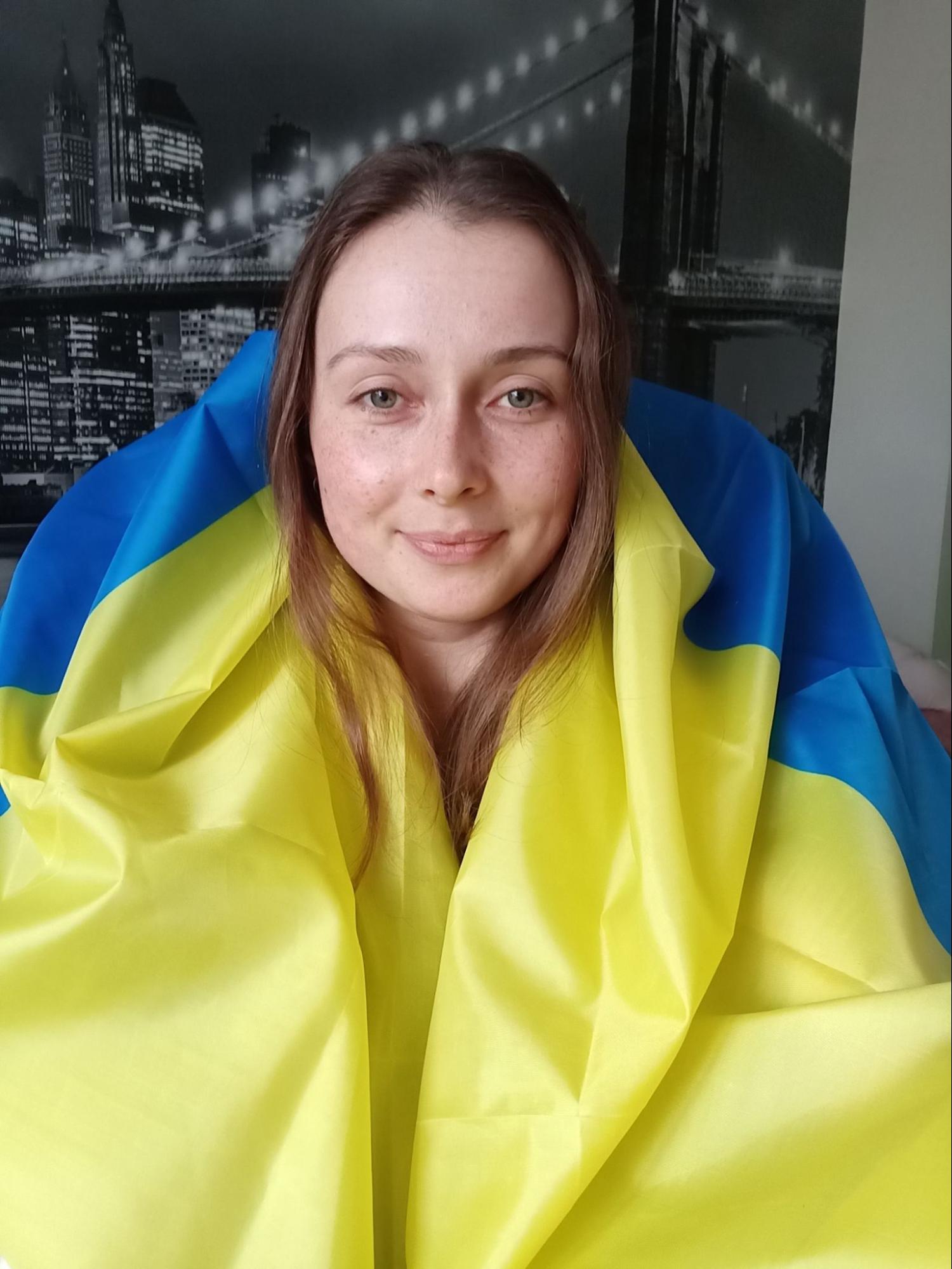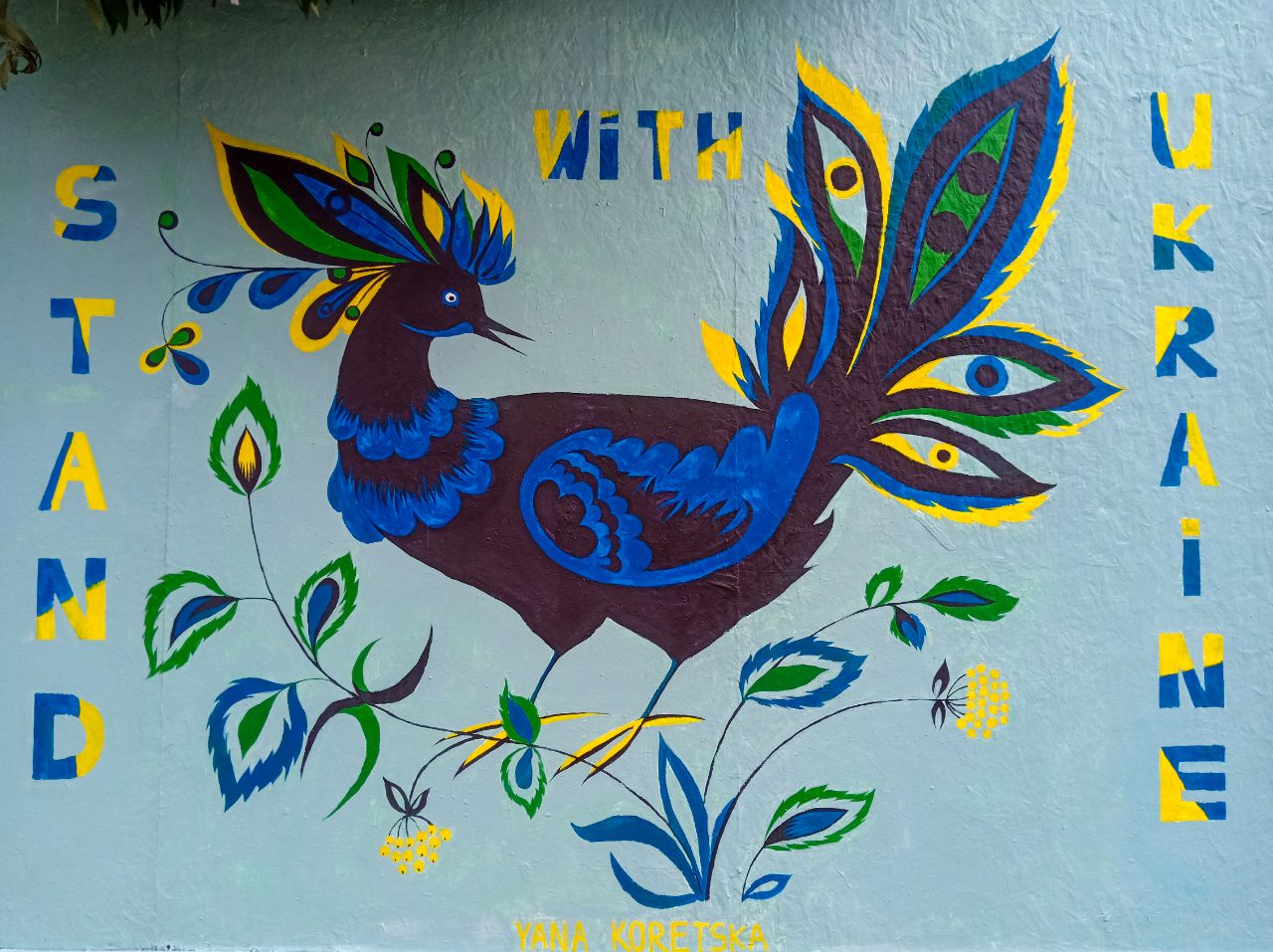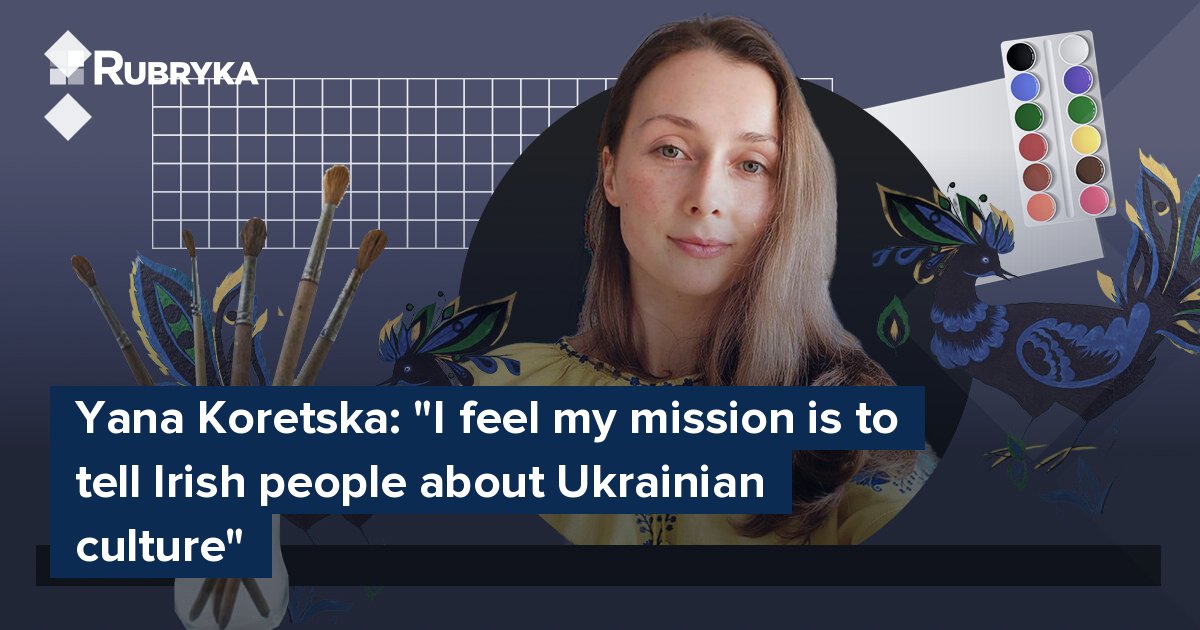
What is the problem?
"I understood that there are no guarantees of safety"
As a child, Yana Koretska often redrew the ship from the picture painted by her sailor grandfather. But the older the girl got, the more she wanted to become a professional artist. In the end, it turned out that way. Now, Koretska creates paintings with Ukrainian motifs abroad, thanks to which she collects money to help Ukrainians and constantly tells Europeans about the war.
When the full-scale invasion began, Koretska already had experience teaching in China and working as a dancer in the circus there. However, even pre-COVID-19 times, she returned to Ukraine and began teaching painting to children in Kremenchuk.

Artist Yana Koretska. Photo from the heroine's archive
After February 24, 2022, when Russia launched its full-scale war on Ukraine, childhood friends of Koretska's mother called the Koretsky family to leave for Ireland, but only Yana agreed.
"There was a lot of talk about nuclear weapons. I understood that there are no guarantees of safety. That's why I decided to go. The war left its mark. It's a huge stress and pain," Koreretska shared with Rubryka.
Because of the war, the artist had to say goodbye to her usual life — family, friends, and work, and go to a place where very little is known about Ukraine and its culture. Under the influence of enemy propaganda before the full-scale war, many Europeans perceived Ukraine as part of Russia. The same applies to culture — those Ukrainian works of art and traditions that became known abroad were often considered Russian.

The artist is convinced that Ukrainians contribute significantly to European culture and that the whole world should know about it. Photo from the heroine's archive
What is the solution?
Korerska shares that she immediately understood that she would tell people abroad about Ukrainian culture and the nation's heritage and make Ukraine, in the eyes of the Irish people, something more than the country they talk about in the news.
"I feel my mission, in particular, is to tell foreigners about Ukrainian culture. Among the refugees, there are various people, including those who do not behave very culturally or simply do not have the opportunity to talk about Ukraine from various angles. Therefore, it is important to convey to foreigners that Ukrainians work hard and do a lot. In particular, in culture," Koretska shares.
So, the war gave Koretska an unexpected challenge — to talk about her country in someone else's.
However, the Ukrainian is convinced: "War must be accepted as part of your journey," despite the difficulties, she found a way to be useful in her place and tell the world about the war through art.
At first, Koretska lived with her mother's friends before moving to a host family. In Ireland, there is a program under which residents provide housing to Ukrainians, and later, the state pays them compensation for this.
"I am more useful here, doing what I do in my niche. I understood that in Kremenchuk, I would not be able to earn money to help and donate," the artist shares.

Yana Koretska with Ukraine's flag. Photo from the heroine's archive
Once in Dublin, Koretska was invited to an art session of local artists on the embankment. On one of the fences set aside for graffiti, the artist decided to draw a bird.

Yana Koretska's bird on the Dublin embankment. Photo from the heroine's archive
The graffiti in the style of the Petrykivka painting caused such a stir that Koretska later gathered those willing for a series of charity workshops on creating the same drawing. The artist divided the collected funds between Ukrainian foundations.
"People were delighted with the Petrykivka painting," Koretska recalls. "This is not something abstract and strange that not everyone can understand, but specific and beautiful that everyone can try. At one of the workshops, an American woman who married an Irishman and lives in two countries said that in the US, there is a tradition to paint doors before Christmas. She ordered door panels with blue and yellow birds from me. This door was a winner at their local competition."

The door Koretska painted for an Irish-American family. Photo from the heroine's archive
During master classes, the artist talks about Ukrainian culture, traditional Ukrainian towels — rushynyks, embroidery, and Ukrainian art. At one of these workshops, Koretska met Irish couple Alison and Jerry Brown. They say that Koretska's art makes them closer to Ukrainians: "We discovered a wonderful person who is in love with tradition, who has strong family values, and who values her heritage very much. We believe that Koretska shares many similar values and traditions with the Irish people and therefore fits in very well here in Ireland."
How does it work?
Koretska was lucky to get into a creative family that gave her a home in Dublin. The family is interested in philosophy, psychology, and Irish mythology. Helen O'Malley-Dunlop chairs the Women's Rights Commission. O'Malley-Dunlop says that the way Koretska talks about her culture is manifested not only in her public activities but also in her everyday life. She has lived with the family since April 2022. "We are very sad that because of a ruthless and unjust war, Koretska had to leave Ukraine, the country she loves, where her whole family still lives. But thanks to her, we got to know a part of Ukrainian customs. It was very interesting to watch how Koretska prepares traditional dishes for her family and friends when they come to visit her. We have a common cultural experience of love for music and entertainment, and we still gather for celebrations. Sometimes Koretska sings, and we just enjoy listening to her."
Koretska remembers how, on Christmas, she cooked 12 dishes for the family she lived with, and on Easter, she treated them with traditional Ukrainian bread, paska.
"Irish people love Ukrainian dishes," says the girl.

Вечеря з 12 страв. Фото з архіву героїні
Dinner with 12 dishes is traditional for celebrating Christmas in Ukraine. Photo from the heroine's archive
She adds that communicating about Ukrainians, in particular through the culinary culture, is always interesting both for her and for the Irish, who, as a rule, know little about Ukraine.
"At the slightest opportunity, I talk about Ukrainian grandmothers who grow organic vegetables and fruits for children, the feats of the Ukrainian army, borscht, dumplings, a passport in a smartphone, homemade wine, the Carpathians, pysanky, motanky, vyshyvanky… In general, I talk about Ukrainian culture. Here, people hardly know about it, just as I knew almost nothing about Ireland until I was here."
Still, the artist's main vocation remains drawing. In Ireland, she contacted the Royal Hibernian Academy to establish communication with local artists. She was offered to attend workshops and courses to improve her skills.
"She draws better than most Irish art students. I think this has to do with the fact that in Irish art colleges, the emphasis is more on concept and theory than technique. This also applies to other Ukrainian artists I have met — they are much better at drawing than the Irish who studied at art college," says teacher Yana Bales Smith.

The artist is posing near her work. Photo from the heroine's archive
Koretska herself says: "No matter where I am, no matter what I do, I still make sketches every day. It's like athletes — if they stop training, they lose their skills. The same goes for artists. You have to constantly keep yourself in artistic shape."
Dublin's local volunteer association, Tidy Towns, engaged in street cleaning and social work, invited Koretska to join the Clean Cities project. The artists offered to paint a 45-meter educational mural for children. The task was to depict local animals and plants with captions so the children would memorize them better.
There are also sessions for street artists in Dublin. A particular area is highlighted where you can draw. Koretska drew there the already mentioned bird and the Ukrainian trident. In addition, the artist participated in the Christmas exhibition of international artists, where she sold one of her paintings for €750, half of which she donated to Ukrainian volunteers.
"Now I am working on a picture about how I feel the spirit of Ukrainians, about the struggle for good. I am working on it as part of the course Resolution in Painting. I am promised that this painting will be included in the exhibition of the Royal Hibernian Academy, one of the most prestigious galleries in Ireland," Koretska says about her work.
The artist says that she has a lot of support in Ireland, but in the first place, it is the support that Ukraine should receive from the world.
"The Irish are a very friendly society. I am surprised and impressed by their support. When I painted a mural for children, people passing by always stopped, asked what I was painting there, and wished me success, which was so nice. Simple support and friendliness are so inspiring that you want to work even harder, to give your work all the best that is in you. An acquaintance of mine said that Ireland is a big mother. At first, I didn't understand what it was about, but now I felt it for myself," Koretska shares.

The artist adds that the Irish and Ukrainians are similar to each other, so she is more comfortable in this country than she expected.
"Ireland is cozy. Probably struggling with tough weather conditions, the Irish learned to create a warm and pleasant atmosphere in their homes, which was somehow transferred to relationships between people. I have never felt so calm and comfortable anywhere as here. In some ways, our peoples are similar — we need to talk to each other heartily and sincerely."
She, like all Ukrainians, dreams of Ukraine's victory and wants the enemies to finally understand that for every strength, there is an even greater strength. In particular, cultural. As long as Koretska and thousands of other talented Ukrainians promote their country to the world and bring Ukrainian culture to the masses, they become stronger as a nation. Ukrainian cultural codes are becoming clearer and more powerful, and Ukraine itself ceases to be associated exclusively with war. Instead, it becomes the face of strength — spiritual and cultural.

Voice of Ukraine in the Czech Republic: "I have the chance to not sleep under missiles, but in return, I must do everything I can to make sure this war ends in victory"

"This generation is completely different": How Ukrainian woman abroad helps youth land first job













